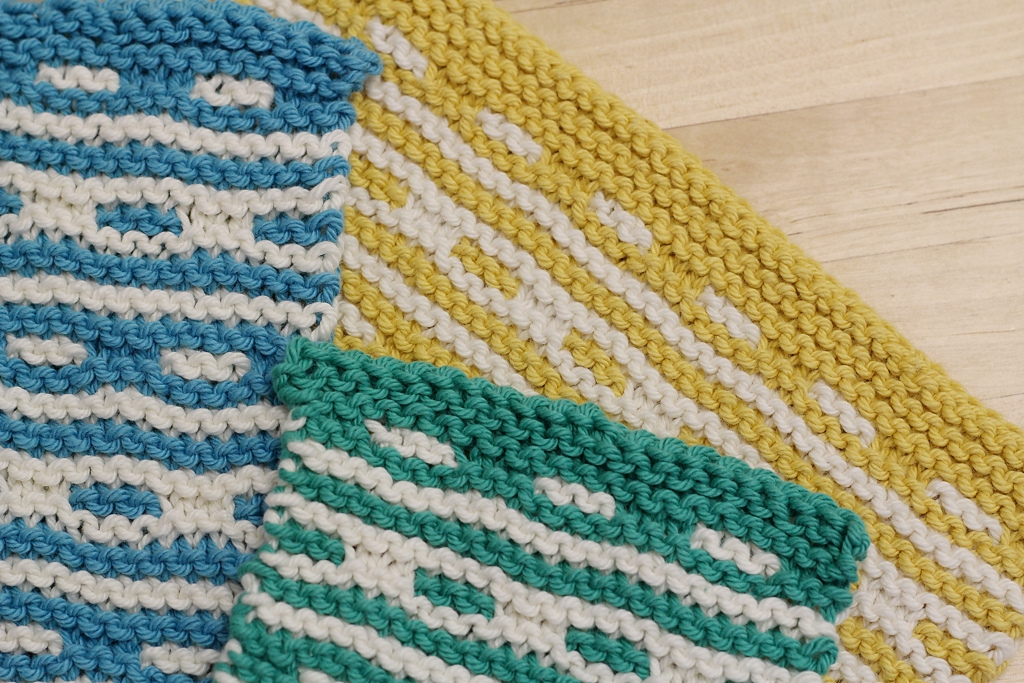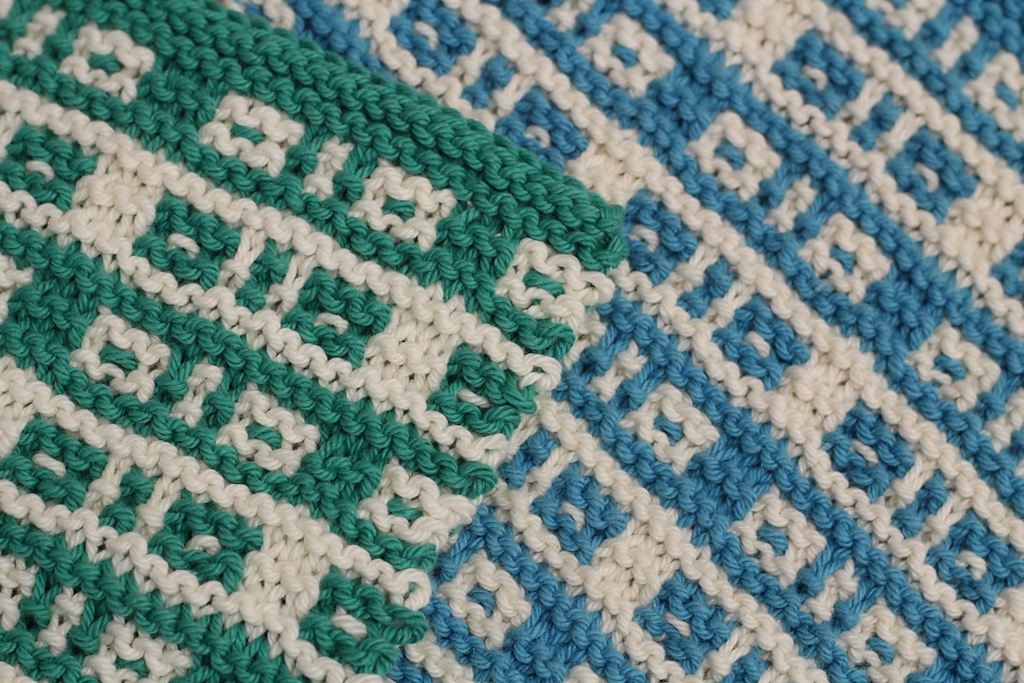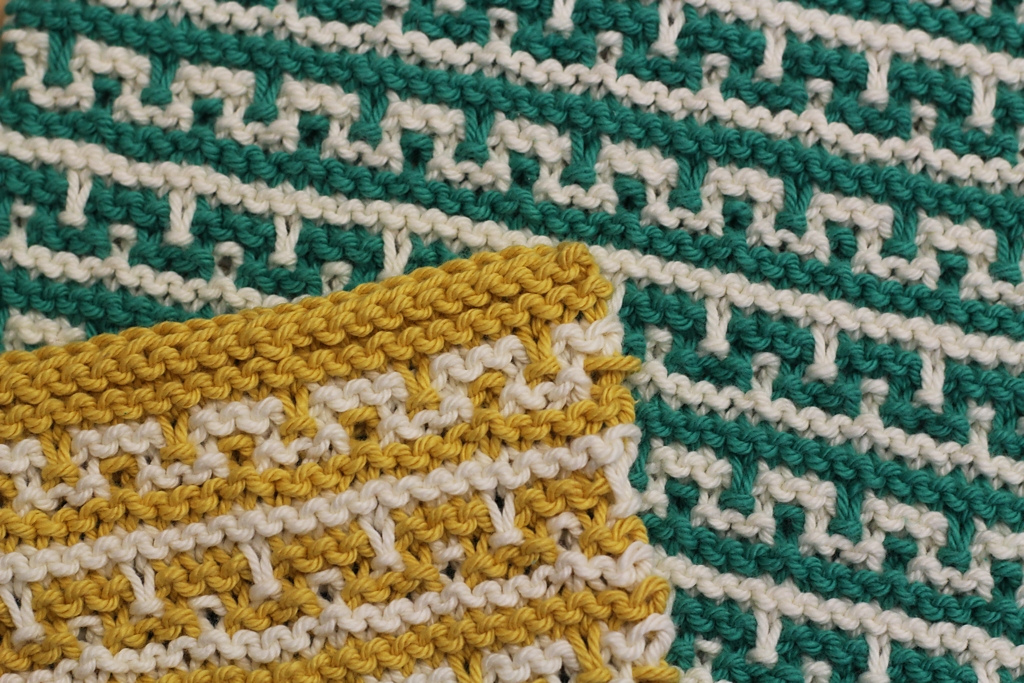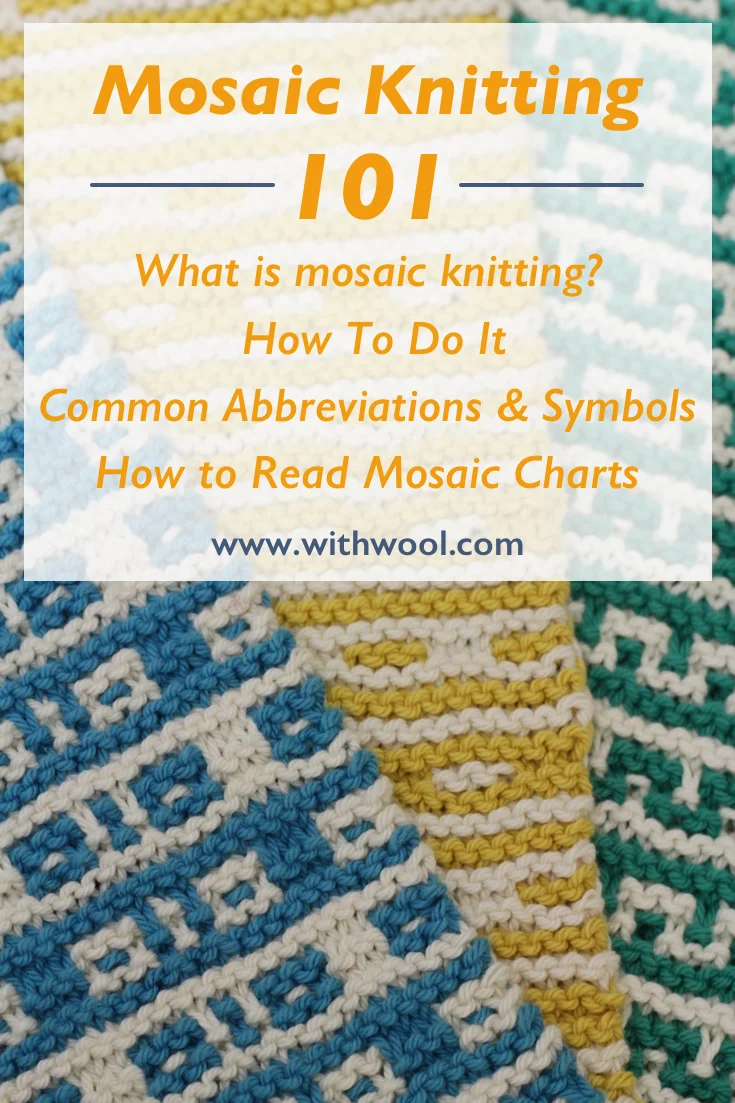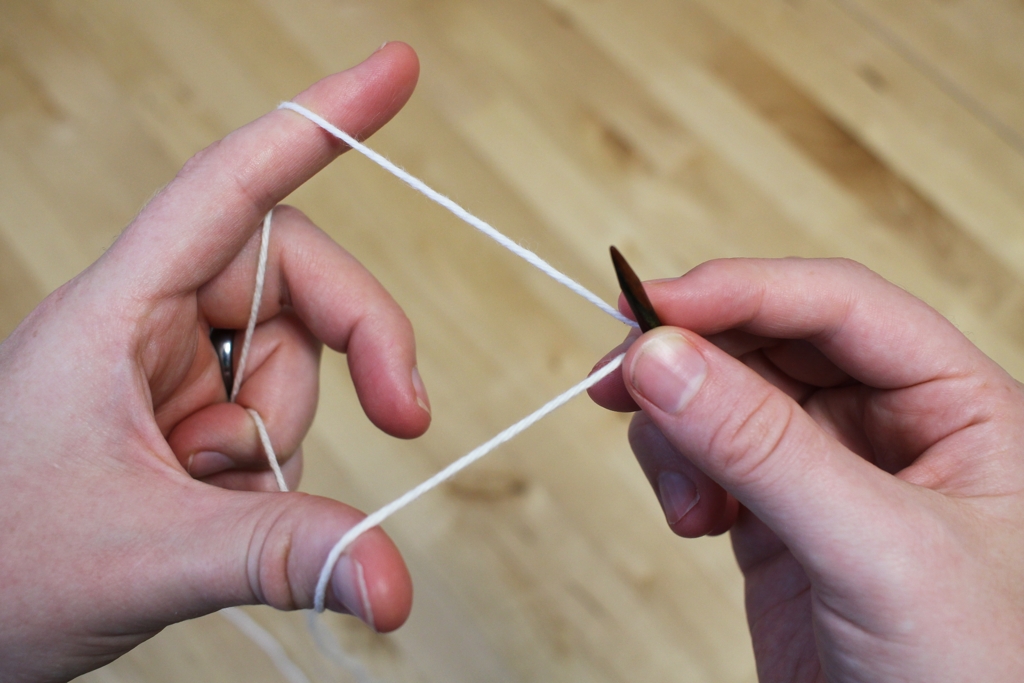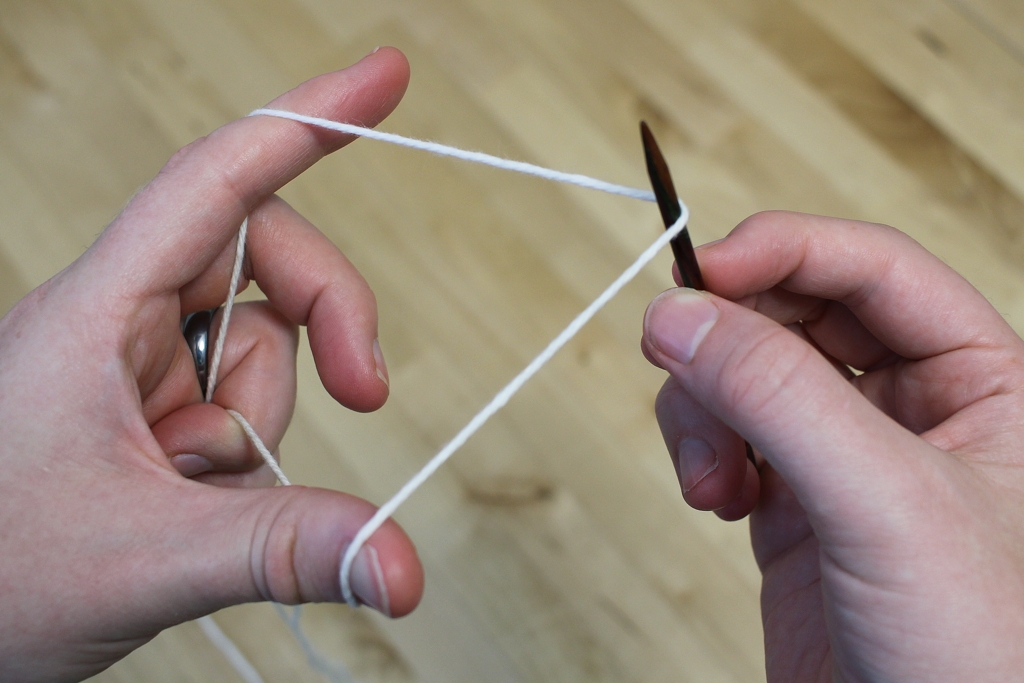Pattern: Mosaic Sisters
/I am thrilled to finally share the Mosaic Sisters! Why sisters? Because each mosaic design, though unique, shares several traits. They all have wide stripes, are knit in garter stitch, and have geometric designs. The pattern is a set 3 three different designs that can be turned into kitchen towels, washcloths, and coasters. Or anything else your needles desire. Mosaic knitting makes the cloths the perfect thickness and texture to be useful in both the kitchen and the bathroom. Since the basis of the patterns is garter stitch, the cloths won't twist or curl. Since they're all sister designs, you can make them in as many or as few colors as you want. Make a whole set in 2 colors or mix and match for maximum rainbow.
If you're nervous about working mosaic knitting for the first time, I wrote a few tutorials to help. Mosaic Knitting 101 will show you the basics, and the next tutorial shows how to carry yarn up the side of the work. To cast on, I recommend the long-tail cast on - it's great with cotton.
I had the idea for the Mosaic Sisters years ago. At the time there was only one cloth, the oldest sister of course, and it had a different name. I knit the first sample, wrote the pattern, and made the chart. For one reason or another I never published it. Years later I saw a call to submit designs for home related patterns. The oldest sister came to mind, but I knew I couldn't just submit one - that's when the middle sister came along. Spoilers - the submission wasn't accepted. Now two designs were hanging out on my hard drive. Once the sting of disappointment wore off, I looked at them again and decided to add a third pattern to the set, the youngest sister. I've been swatching, charting, knitting, and putting the pattern together ever since. It's been a long road, but I'm glad that the sisters are finally getting their debut.
To celebrate the Mosaic Sisters release, the pattern is free until Sunday, December 6 11:59 PM PST. Afterwards, it'll go to it's regular price of $5. No coupon or Ravelry account required. Happy knitting!
Mosaic Sisters
Sizes: Kitchen Towel - 8.5" x 14"; Washcloth - 8.5" x 8"; Coaster - 4.25" x 4"
Gauge: 5 sts = 1" in pattern
Needles: US 6 (4mm) straight or circular needles
Yarn: Worsted Weight Cotton Yarn in 4 colors
Shown in Knit Picks Dishie - Swan, Azure, Crème Brulee, and Tranquil
For the kitchen towels: 37g / 70 yds each color
For the washcloths: 20g / 39 yds each color
For the coasters: 7g / 14 yds each color



